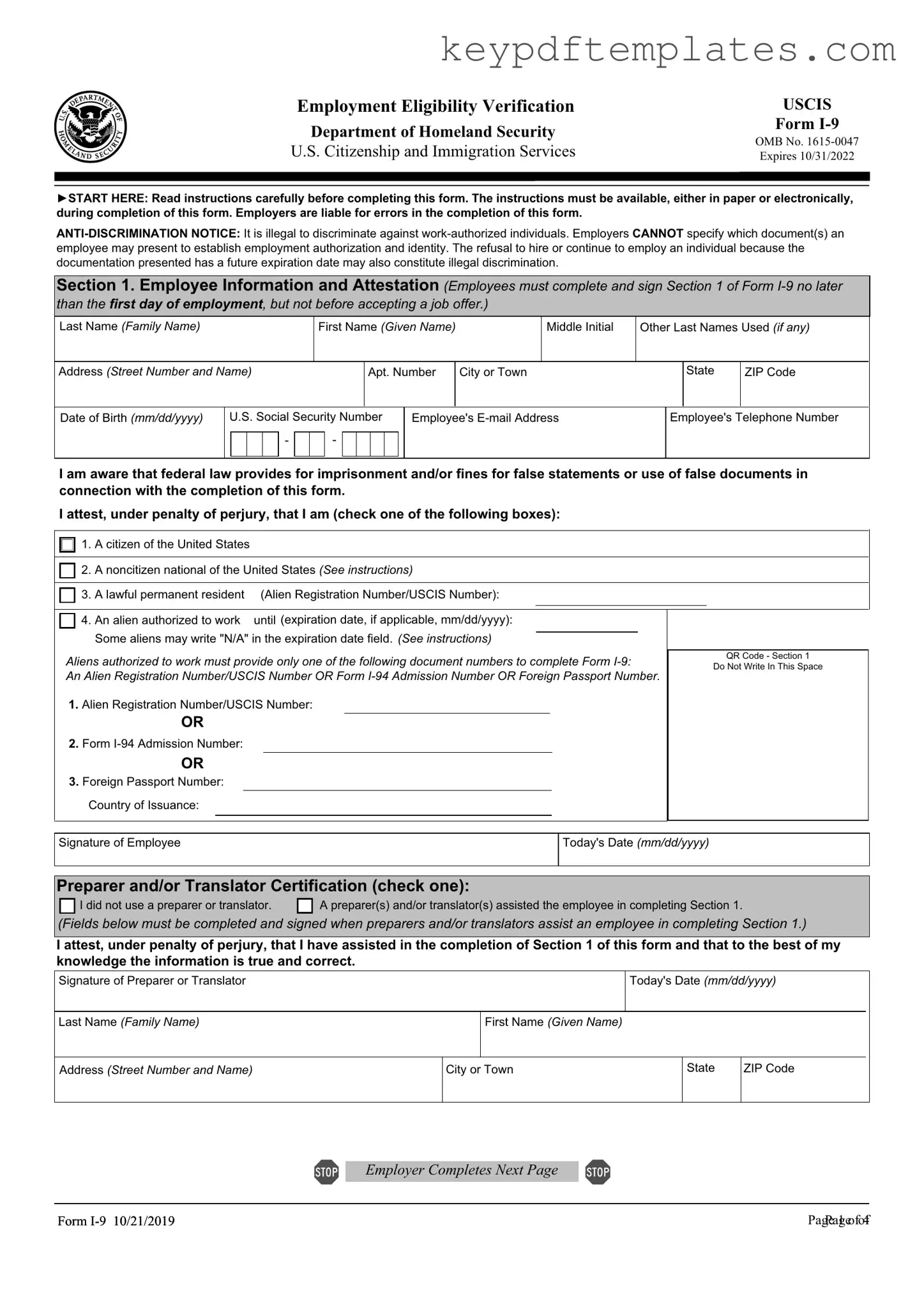Get USCIS I-9 Form
The USCIS I-9 form is a critical document used by employers to verify the identity and employment eligibility of their employees in the United States. This form ensures that all workers are legally authorized to work, helping to maintain compliance with immigration laws. Understanding the I-9 form is essential for both employers and employees to navigate the hiring process effectively.
Modify Document Online
